Projects
Learn more about the on-going projects StoryBench is tackling.
2020 Election Tracker
- How The Washington Post visualized the Republican primary debatesFrom the very first moments of the Aug. 23 Republican primary debate, Hannah Dormido was furiously scribbling in her notebook. Each time Trump’s name was mentioned, check. Hunter Biden, check. Ukraine, check. Her process is a cluttered scramble, but the finished product is a clean, easily-digestible series of visuals explaining the debate’s key themes and
- 5 ways news organizations are visualizing election dataBelieve it or not, the first presidential primary is only three months away. Let us take a look at five smart ways that news organizations are presenting election data, such as candidates’ profiles, voting demographics and districting, so you can make your data visualizations more powerful and better inform readers. Let users try out different scenarios
- How to analyze the screen times of presidential candidatesWho and what is being discussed on cable television news can reveal a lot about our current media landscape or political state of affairs. The Stanford Cable TV News Analyzer, built by Stanford University’s Computer Graphics Lab and John S. Knight Fellowship Program, provides the data for us to look at trends in cable news
- Reopen schools narrative spreads across shadowy local news sitesAmericans are divided about reopening schools this fall and polls show that this disagreement falls along party lines with Republicans more in favor of children returning to schools. Which is why it wasn’t surprising when we found a pro-school reopening narrative popping up this summer on a large network of local and business news websites
Reinventing TV
- How Gabby Aidam is Using Animation to Bring Local TV News to LifeTo better understand what digital consumers want from local news online, Northeastern University’s Reinventing Local TV News Project (RLTVN) explores how TV stations can share stories that connect with younger audiences on digital platforms. Gabby Aidam, a recent Northeastern graduate in Game Art and Animation, was a RLTVN fellow, collaborating with all three other fellows
- Breaking News Barriers: Northeastern-WCVB Partnership Honored with regional Murrow AwardA research partnership between Northeastern University’s School of Journalism and WCVB-TV in Boston has been recognized with a major journalism award. WCVB received a 2025 regional RTDNA Edward R. Murrow award for excellence in innovation. For the award, WCVB submitted ten videos produced by Leanna Scachetti. Scachetti joined the WCVB newsroom in December 2023 as
- Eight years post NBC breakup: How 7News “makes you wanna watch”Since its breakup with NBC, WHDH Channel 7 News in Boston has continued to thrive as a bastion of independent journalism without a network affiliation. Nestled in the heart of the city, 7News has distinctly carved out its space in the competitive Boston media market, delivering snappy and visually compelling stories on a daily basis.
- From print to reels: How student journalists are crafting news for the digital ageIn 2025, the sight of a steaming cup of coffee and a freshly printed newspaper on a kitchen table is a rare snapshot of a bygone era. Journalists of the past quarter-century have seen newspapers and magazines grapple with declining circulation in a world driven by digital media, and younger generations are forcing publications to
Climate Journalism Lab
- The Shore Line Project turns the tide on environmental discourseShorelines are where half the world’s population lives, bursting with attractive greenery and many natural resources. But they are facing inherent risk due to rising seas and violent storms. A compelling interactive documentary, “The Shore Line” utilizes powerful visualization techniques to unravel the intricate web of challenges and connections between communities and their shorelines in
- How Felippe Rodrigues at New Zealand’s Stuff brought to life a chart of Earth’s changing temperatureIn conversations about climate change, climate skeptics frequently raise the point that the temperature has always fluctuated and has been on the rise for millennia. In fact, this is true. But the average temperature of the Earth has never risen so drastically or as quickly as it has during the last 100 years. Felippe Rodrigues,
- Scrollytelling innovation: New York Times journalists on climate change, visualization, and intense teamworkAs visual storytelling libraries clutter newsroom servers, multimedia projects involving data visualizations, photos, videos, and even augmented reality components are becoming more and more popular. But it is unclear to today’s up-and-coming journalists whether those interested in reporting are also expected to master these complex technologies. “The Coming California Megastorm,” a New York Times story
- How the Allen Coral Atlas is mapping and monitoring coral reefs worldwideAlthough coral reefs occupy less than one percent of the ocean floor, their importance extends well beyond their size. The National Oceanic and Atmospheric Administration estimates that 500 million people survive on coral reefs for income, and their economic value in the U.S. is estimated at $3.4 billion each year. More importantly, healthy coral reefs
Data Journalsim in R
- How to Analyze bluesky Posts and Trends with RIf the only things you’re doing on bluesky are scrolling, liking and posting, then you are still riding a bike with training wheels. Hear me out. There are several simple and free tools out there that let you take advantage of bluesky’s secret weapon: its open-source skeleton. A how-to A few firehose ideas: First, you’re probably
- Easily clean up messy databases with fuzzy matching in ROne of the biggest challenges working with text data is the many different ways that people can enter the exact same information. A human knows that “St. Lucie, Florida,” “Saint Lucie, FL,” and “St Lucy, Florida” are probably all the same place, but a computer doesn’t. “Fuzzy” matching pulls similarities between the letters in words and
- How to use R to dig for story ideasMany people think of R as a way to visualize data, but it can also be a useful tool to explore datasets and seek possible story ideas. At the 2023 Investigative Reporters and Editors conference, Charles Minshew, the digital storytelling editor at the Atlanta Journal-Constitution, walked through using basic R code to question datasets. Knowing
- Turning your small-multiple charts into maps using RThe geofacet R package provides a way to flexibly visualize data for different geographical regions, combining multiple small charts into a map.


